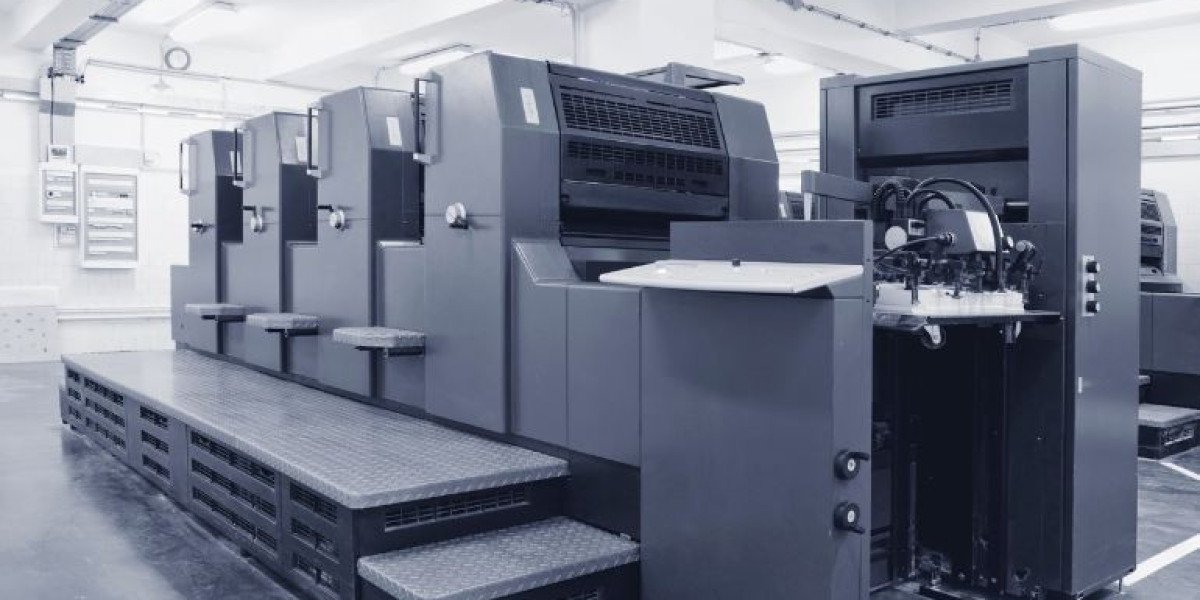Offset printing, also known as lithography, is a widely used printing technique that has been the backbone of the printing industry for over a century. Known for its high image quality and cost-effectiveness in large-scale production, offset printing is the method of choice for many businesses and industries. In this guide, we will explore what offset printing is, how it works, its advantages, disadvantages, and its various applications.
How Offset Printing Works
Offset printing involves a multi-step process that transfers an inked image from a plate to a rubber blanket and then onto the printing surface. Here’s a detailed look at each step:
Prepress Preparation
- Design Creation: The process begins with the creation of a digital design using graphic design software.
- Plate Making: The digital design is transferred onto metal plates (usually aluminum) through a process called platemaking. Each color in the design requires a separate plate.
Ink Application
- Ink and Water Balance: Offset printing relies on the principle that oil and water do not mix. The plates are treated so that only the image areas attract ink, while the non-image areas attract a water-based solution to repel ink.
- Inking the Plates: Ink rollers apply ink to the plate’s image area, while water rollers keep the non-image areas clean.
Transferring the Image
- Offset Process: The inked image on the plate is first transferred (offset) onto a rubber blanket. This flexible blanket then presses the image onto the paper or other printing surface.
- Printing: The rubber blanket cylinder transfers the inked image onto the paper as it passes through the press.
Advantages of Offset Printing
High Image Quality
- Offset printing produces sharp, clean, and high-resolution images with excellent color fidelity. It is particularly effective for detailed graphics and text.
Cost-Effective for Large Volumes
- While the initial setup costs are higher due to plate making, the cost per unit decreases significantly as the quantity increases. This makes offset printing very economical for large print runs.
Wide Range of Paper Types
- Offset printing can handle a variety of paper types, sizes, and finishes. This versatility allows for the production of everything from simple brochures to high-end magazines.
Consistent Quality
- Once the press is set up and running, it maintains consistent quality throughout the print run. This is crucial for projects requiring uniformity across large quantities.
Speed
- For large print runs, offset printing is generally faster than digital printing, as the press can operate continuously once set up.
Disadvantages of Offset Printing
High Initial Setup Cost
- The preparation of printing plates and press setup involves higher initial costs. This makes offset printing less cost-effective for short print runs.
Longer Turnaround Time
- The setup process, including plate making and press adjustment, takes time. This results in longer lead times compared to digital printing, which can start almost immediately.
Limited Customization
- Offset printing is not well-suited for projects requiring variable data printing, where each printed piece needs to be different. Digital printing is better suited for such tasks.
Applications of Offset Printing
Offset printing is ideal for a variety of large-scale printing needs, including:
Books and Magazines
- High-quality image reproduction and cost-efficiency make offset printing the preferred method for publishing books and magazines.
Newspapers
- The ability to print large quantities quickly and economically is essential for daily newspapers.
Brochures and Flyers
- Businesses often use offset printing for marketing materials that need to be produced in large quantities.
Packaging
- Offset printing is used for high-quality packaging materials that require precise color matching and detailed graphics.
Stationery
- Corporate stationery, such as letterheads and envelopes, is often produced using offset printing to ensure consistent quality and brand colors.
Conclusion
Offset printing remains a cornerstone of the printing industry, thanks to its ability to produce high-quality prints efficiently and economically for large-scale projects. While digital printing has gained popularity for its flexibility and quick turnaround times, offset printing’s superior image quality and cost-effectiveness for large runs make it an indispensable tool for many printing needs.
Whether you’re looking to print a large batch of brochures, magazines, or any other high-volume project, offset printing provides the quality and consistency you need. Contact our professional printing services today to learn more about how offset printing can meet your specific requirements and help you achieve outstanding results.








